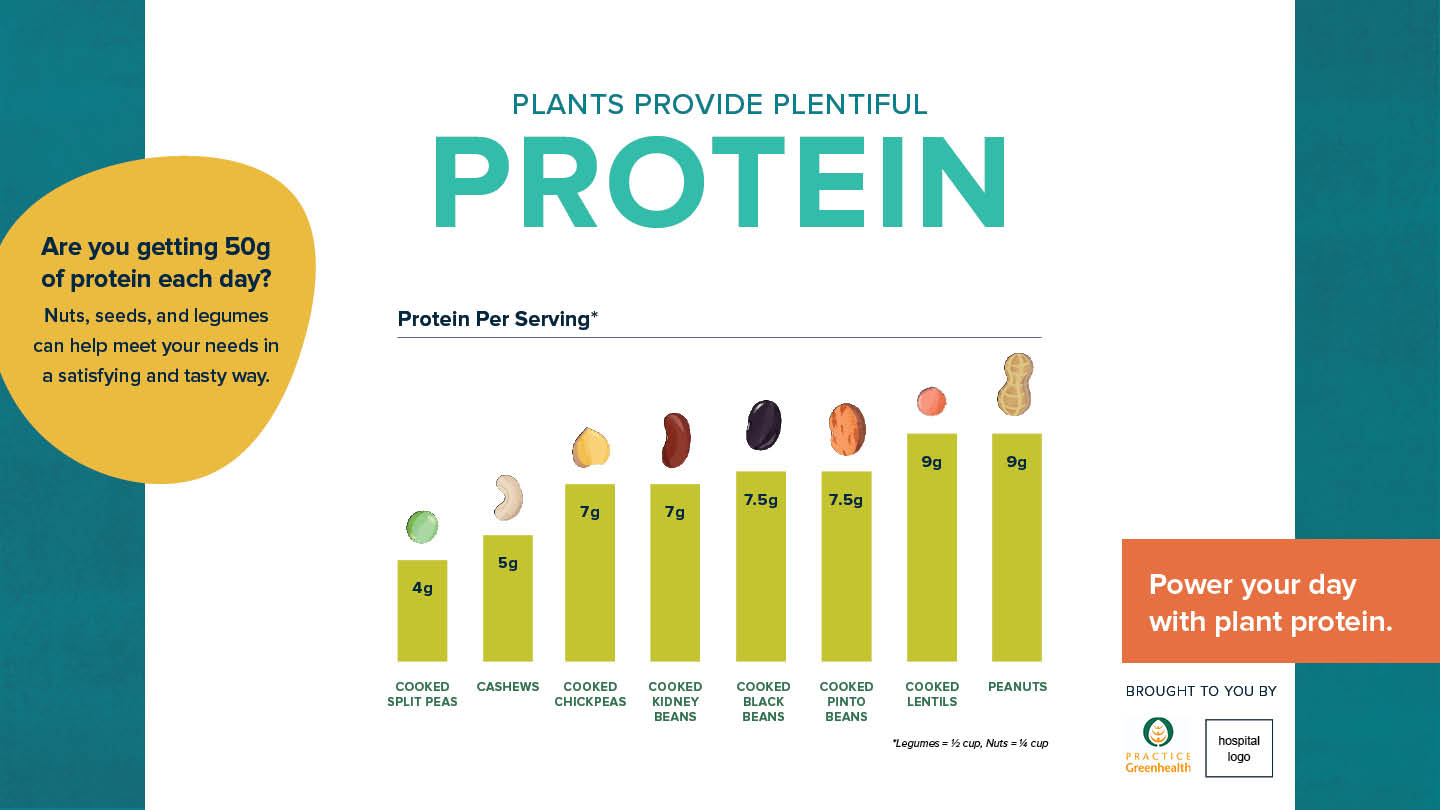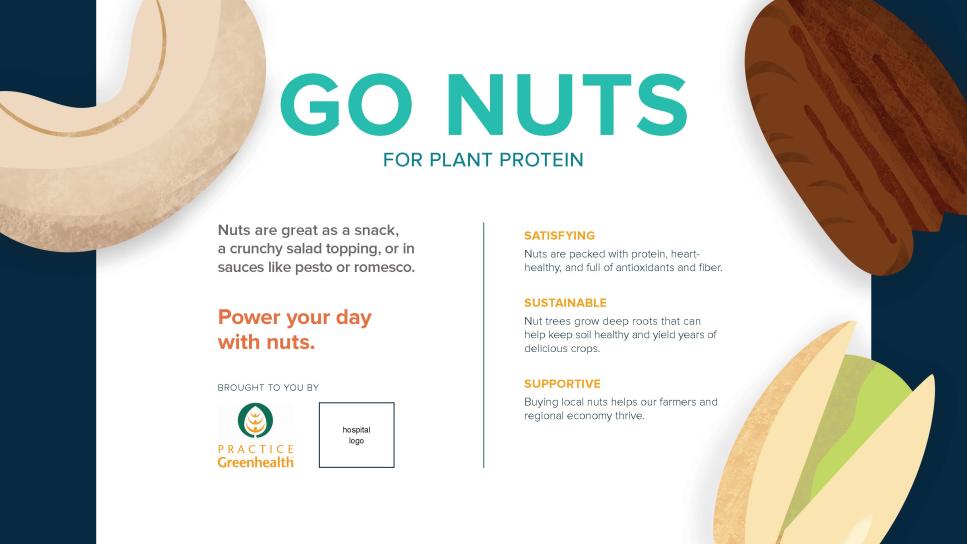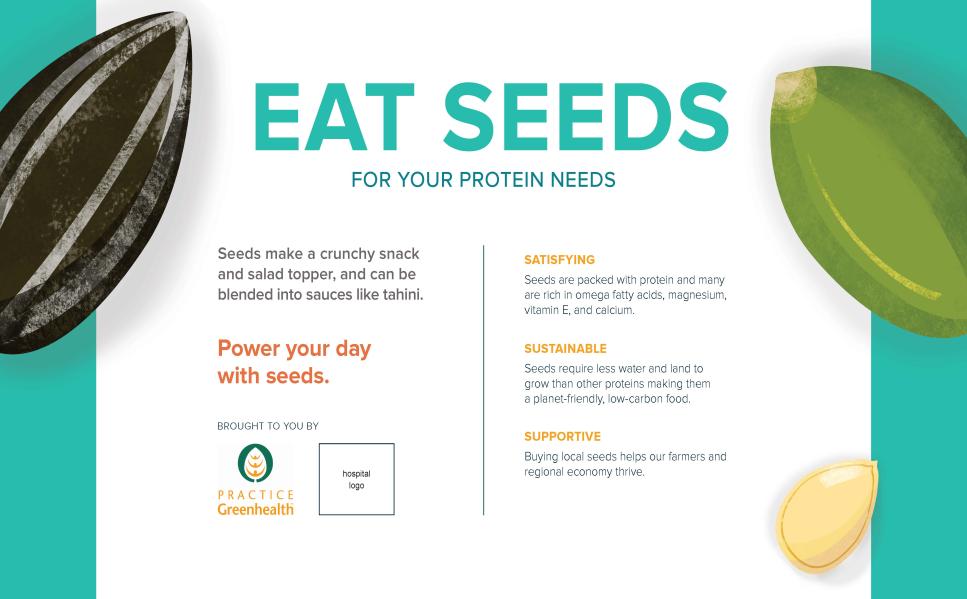Plants provide plentiful protein

[Plant-Forward-Future] The National Academy of Medicine recommends adults get a minimum of 0.8 grams of protein for every kilogram of body weight per day, or just over 7 grams for every 20 pounds of body weight. Fortunately, there are many plant-based protein sources available that not only satisfy and delight but are healthier for people and the planet.
Legumes
Includes: lentils, beans (adzuki, black, fava, chickpeas/garbanzo, kidney, lima, mung, pinto, etc.), peas (green, snow, snap, split, etc.), edamame/soybeans (and products made from soy: tofu, tempeh, etc.), peanuts.
Nuts & Seeds
Includes: almonds, pistachios, cashews, walnuts, hazelnuts, pecans, hemp seeds, squash and pumpkin seeds, sunflower seeds, flax seeds, sesame seeds, chia seeds.
Whole grains
Includes: Kamut, teff, wheat, quinoa, rice, wild rice, millet, oats, buckwheat
The science of plant proteins
Our Redefining Protein: Adjusting Diets to Protect Public Health and Conserve Resources report and associated guide for purchasing considerations provides a comprehensive overview of the most recent research on high-protein foods, with the exclusion of meat, and their influence on health, environment, and society. These resources help navigate the complex decision-making process when making mindful food purchases with an environmental approach, specifically when replacing meat on the plate.
Meet the proteins
Legumes

Legumes, particularly whole legumes and not necessarily processed legume-derived proteins provide extensive health benefits to consumers. Compared to other food groups, they score the best across indicators of environmental impacts, including greenhouse gas, land, and water footprints, and—with the exception of soybeans—pesticide and fertilizer use. They also have relatively few social justice concerns directly associated with their production.
Legumes are a significant source of protein, dietary fiber, carbohydrates, and dietary minerals; for example, a 100-gram serving of cooked chickpeas contains 18 percent of the Daily Value (DV) for protein and 30 percent DV for dietary fiber.
What about meat and dairy alternatives?
Meat protein alternative products have been introduced into the market with increasing popularity. However, the majority of these products contain sodium, fillers, unrecognizable ingredients, and other undesirable additives prompting reflection as to their position as a healthy alternative to meat. Although reducing meat consumption is paramount, health care should prioritize high-protein plant foods rather than meat alternative products due to their optimal nutritional and environmental benefits.
Nuts & Seeds


Nuts and seeds provide many health-promoting nutrients, and regular consumption has been associated with a reduced risk for certain chronic diseases. In some cases, seeds may be a healthy and environmentally sustainable alternative to nuts.
Whole grains
While whole grains are generally known for their carbohydrates, they are also packed with protein. A half-cup serving of oats, for example, offers 5 grams of protein. A quarter cup (uncooked) of barley or quinoa offers 5 to 6 grams. Ancient grains such as quinoa, millet, amaranth, etc. are also great options to add protein to your meals.
Plant-Forward Future
Find downloadable versions of these infographics and everything needed for health care facilities to set a plant-forward goal, menu, and market plant-forward dishes, and track progress.
